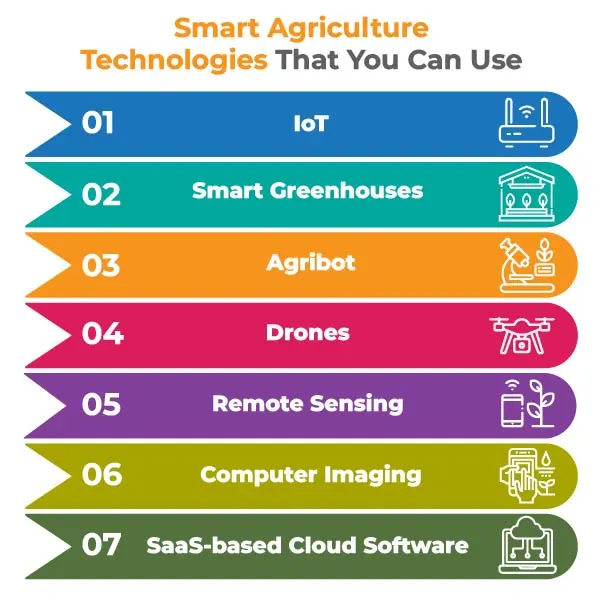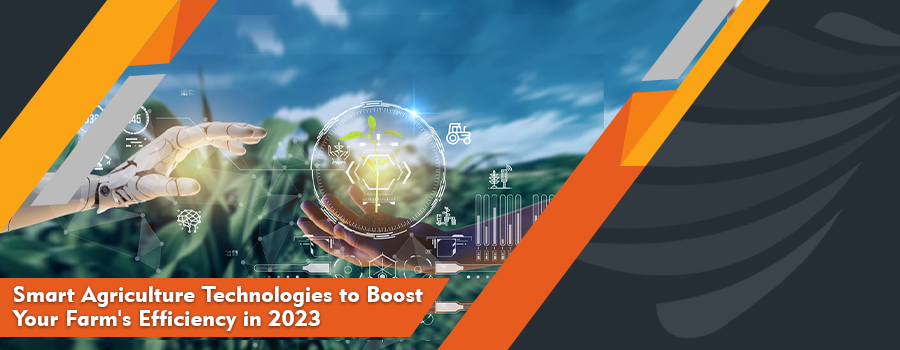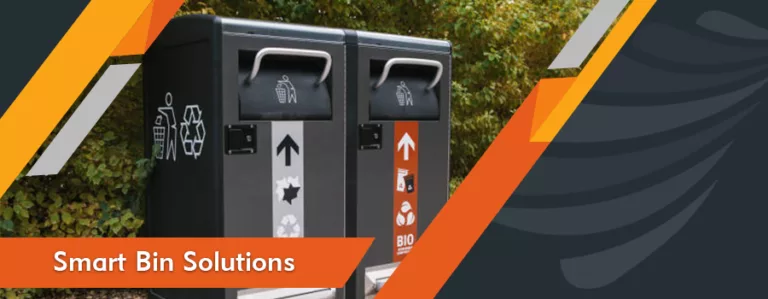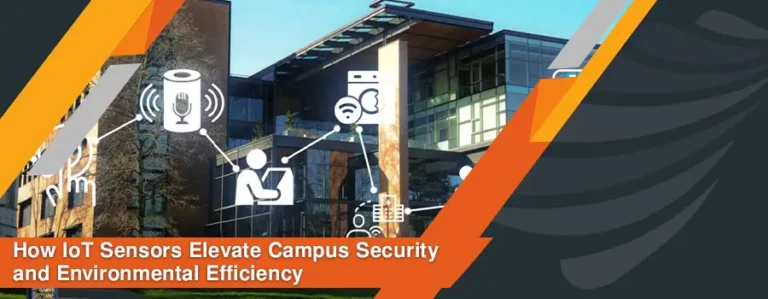The agriculture industry is facing severe challenges in terms of unpredictable contamination of crops, extreme weather conditions, inefficient pest control standards, and food safety monitoring. These challenges are impacting the agriculture industries financially and imposing greater health risks to human health.
The food supply chain is getting more complex, and conventional farming methods are useless. However, advanced technologies can transform inadequate farming methods into smart farming to ensure greater yields and efficiency. Smart farming aims to manage agricultural activities through new technologies. The technologies may include artificial intelligence, machine learning, robotics, predictive analysis, IoT, and drones to deliver cost-effective farming outputs.
Smart farming utilizes hardware and software technologies to gather data, analyze it, and produce actionable insight to manage pre- and post-harvest farming operations. Various smart agriculture technologies are present to increase your farm’s yield in 2023. However, some of these technologies are discussed in the following article.
Why is Smart Farming better than Traditional Farming?
Traditional farming follows unscientific and unreliable crop cultivation methods, leading to the imprecise application of pesticides and fertilizers throughout the field. Also, conventional farming methods are exposed to data losses and errors because all the work is done manually. Due to a lack of data, farmers do not have adequate predictions about the weather, and fields are destroyed in case of extreme weather conditions. Additionally, farming becomes time-consuming because farmers work by hand in traditional settings.
Smart Agriculture settings have a centralized data management system compared to traditional farming. The sensors collect the data from the fields, save it in the databases, and then analyze it to provide farmers a valuable insight into the crop variety and input requirements. Smart farming methods save cost by providing reliable weather forecasts to minimize losses and maximize resource utilization. Automation is the biggest segment of smart agriculture, unlike traditional farming. Automation not only enhances productivity and yield but also reduces human error. The discussion indicates that smart farming is far much better than conventional farming in current times.

Smart Agriculture Technologies That You Can Use
1. IoT
IoT sensors can be placed on each farm animal to monitor the livestock’s health. In this manner, farmers can determine animal diseases that might deteriorate their health and take immediate action. With the help of IoT, farmers can now have full control over their operations which can help them optimize their fields and increase yields.
Another application of IoT in smart agriculture is the monitoring of the soil. With a sensor in each field, farmers can check the plantation conditions in all fields and determine the resources needed to enhance the growth of crops. With all this information, decisions on fertilization or irrigation are made with full knowledge of the facts.
2. Smart Greenhouses
Smart greenhouses are becoming increasingly famous in smart agriculture settings. Smart greenhouses create a nurturing microclimate in a small space and are perfect for crop production. The sensors are equipped in the greenhouses to monitor and optimize plant growth and continuously regulate light, humidity, and heat to create a perfect environment. The controlled environment allows crops to achieve the harvesting stage faster while retaining greater nutrients. The technology eliminates the farmers’ worries about extreme and unpredictable weather conditions and makes necessary microclimate changes in greenhouses when required for precision irrigation.
3. Agribot
Agribot is widely used to perform various agricultural tasks automatedly. They are specifically designed to increase the speed and accuracy of the work while reducing the burden on the farmers who perform various farming tasks manually. Mainly, Agribot performs all the basic functionalities involved in agriculture. This includes field plowing, sowing, and then eventually covering the seeds in the soil.
Other application of Agribot includes the detection of weed and other harmful substances on the farming field and then spraying pesticides on the affected plants to prevent damage. These robots can also perform lifting and harvesting tasks in the fields. In the more advanced option, these bots can simply be controlled from the comfort of homes. Farmers only need a smartphone and GPS tracker to position these agribots on the field and perform various tasks.
4. Drones
The use of drones for agricultural purposes will remain relevant in the future as well. Drones utilize highly advanced technologies and are equipped with cameras and sensors for surveying, mapping, and imaging farms. Drones can fly autonomously on the field and can be controlled remotely with the help of their agriculture software-controlled plans present in their embedded systems. Data collected through drones can be drawn into useful insight regarding yield prediction, plant counting, condition of soil and field, spraying, irrigation, and crop health. The factual information helps the farmers make accurate data-driven decisions, ultimately enhancing the efficiency of the farm.
5. Remote Sensing
Remote sensing is another important technology when it comes to smart agriculture. The technology utilizes a network of sensors, acts as a weather station, and gathers data from the farm, which can then be analyzed to provide useful insight. The system monitors changes in crop growth due to temperature, humidity, or light. The data collected by remote sensing devices regarding dew detection, moisture precipitation, temperature, and humidity facilitate the farmers in identifying the weather patterns and environmental conditions that will be perfect for cultivating suitable crops. Another application of smart remote sensing is determining the nutrient values that soil might contain. This information helps the farmers regulate the amount of water and other necessary nutrients needed in each farm for optimal cultivation.
6. Computer Imaging
Computer imaging has been used widely for irrigation monitoring, disease detection, and quality control. For computer imaging, different cameras are installed at various farm locations. The images captured by these cameras go through digital processing to extract all the useful insights from them. The machine learning algorithm in image processing compares the photos from the databases with the crops’ real-time images to determine the crop’s size, shape, growth, and color to retain the quality.
7. SaaS-based Cloud Software
For the management of all the field and financial activities, SaaS-based cloud software is used. Before integrating this software into smart agricultural farms, the farmers had to perform the tedious task of manually keeping the record. This increases the chances of errors in work which also impacts the growth and cultivation of the crops. With constant improvement throughout the years and research on Agri tech software, farmers can now manage all the farm activities in one place while eliminating the paperwork. This has revolutionized the smart farming cycle to generate expected outcomes.
To Sum Up…
The technologies used in smart agriculture focus on collecting and analyzing the data gathered from various sources to show useful or meaningful insights to manage all farm activities with greater effectiveness. The technologies in smart agriculture are not limited to the ones discussed in the following article. However, one thing is clear: smart agriculture technologies have brought predictability, certainty, and accuracy to ensure the implementation of the best practices in farms, secure the future of agriculture, and enhance the farm’s efficiency.





